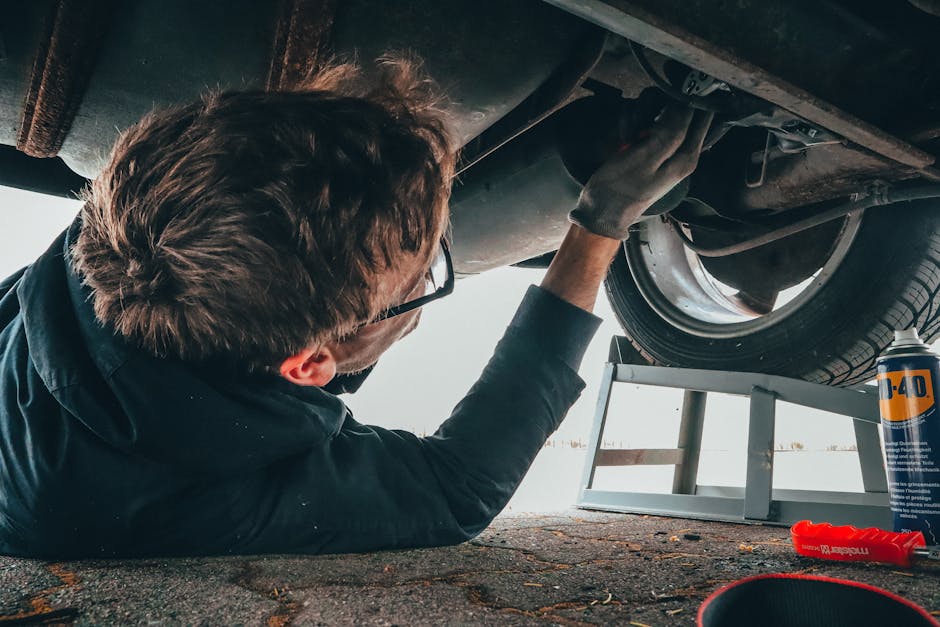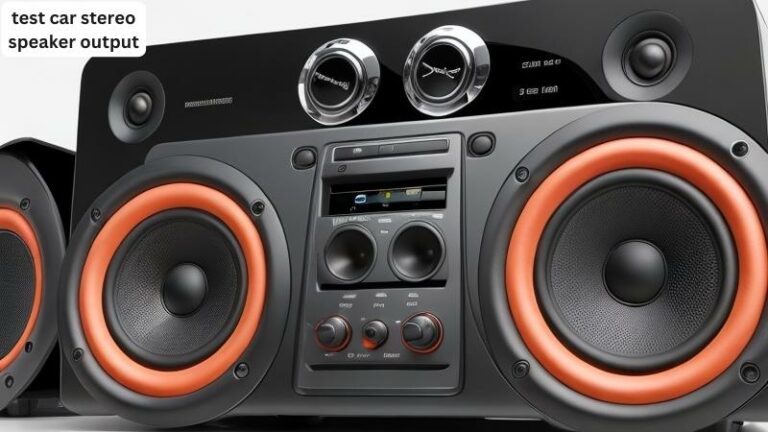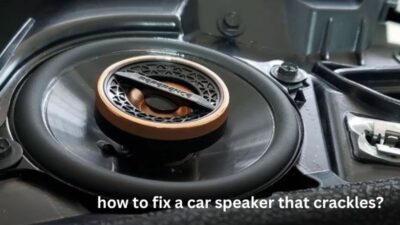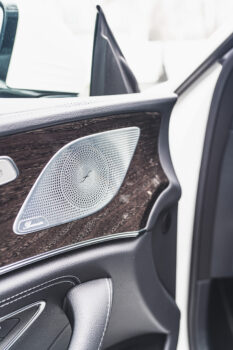How To Fix Vibrating Car Speaker
Today we discuss How To Fix Vibrating Car Speaker. Imagine cruising down the highway, enjoying your favorite tunes, when suddenly an unpleasant vibration disrupts the harmony. It’s enough to ruin any car ride and can be a source of major annoyance. However, understanding the reasons behind a vibrating car speaker is the first step towards finding a solution. From loose connections to damaged components, various factors can contribute to this issue. Luckily, with a little troubleshooting and some handy tips, you can get your speakers back to their optimal performance. So, let’s dive in and uncover the secrets to fixing your vibrating car speaker!

How to Fix a Vibrating Car Speaker:
In this article, we will guide you through the step-by-step process of fixing a vibrating car speaker. A vibrating speaker can be quite annoying and can affect the quality of sound in your car’s audio system. By following these simple instructions, you can eliminate the vibration and enjoy crystal-clear sound once again.
Step 1: Identify the Source of Vibration
The first step in fixing a vibrating car speaker is to determine the source of the vibration. Vibrations can occur due to various reasons, such as loose connections, damaged speaker cones, or even resonance from nearby objects.
Start by playing some audio and carefully listen to identify the specific speaker that is vibrating.
It’s important to note that if all the speakers are vibrating, the issue might lie with the amplifier or the audio source, and you may need to seek professional help.
Once you have identified the problematic speaker, gently touch it with your hand while the audio is playing. If the vibration lessens or stops when you apply pressure, it indicates that the speaker is loose. If the vibration persists, it might be due to a damaged cone or resonance.
Step 2: Tighten Loose Connections
If the vibration is caused by a loose connection, the solution is relatively simple. Start by turning off the car audio system and disconnecting the power.
Carefully remove the speaker cover or grille to access the speaker. Inspect the wiring connections and ensure that they are securely connected.
Tighten any loose connections using a screwdriver or appropriate tool. Once all the connections are tightened, reassemble the speaker and test it again. In most cases, this should resolve the vibration issue.
If the vibration persists after tightening the connections, it’s possible that the problem lies with the speaker cone or resonance. Proceed to the next step to address these issues.
Step 3: Repair or Replace the Speaker Cone
If the speaker cone is damaged, it may cause vibrations. Carefully inspect the cone for any visible signs of damage, such as tears or holes. If you find any damage, you have two options – repair or replace the speaker cone.
If the damage is minor, you can attempt to repair it using a speaker repair kit. These kits usually include adhesive patches that can be used to mend small tears or holes.
Follow the instructions provided with the kit to ensure proper repair. Once the repair is complete, test the speaker to check if the vibration has been eliminated.
If the damage is extensive or the repair does not resolve the vibration issue, you may need to consider replacing the speaker. Consult the manufacturer’s specifications to find a suitable replacement speaker.
Remove the damaged speaker and install the new one following the manufacturer’s instructions.
After installation, test the new speaker to ensure that the vibration has been eliminated and the sound quality is restored.
Step 4: Seek Professional Help
If you have followed all the steps above and the vibration issue persists, it might be time to seek professional help. A car audio technician will have the necessary expertise and equipment to diagnose and fix complex speaker problems.
They can also provide recommendations on upgrading your audio system for better performance. Contact a reputable car audio service center for assistance.
By following these steps, you can effectively diagnose and fix a vibrating car speaker. Remember to always exercise caution when working with electrical components, and if you are unsure, seek professional help.
Enjoy your music without the annoyance of a vibrating speaker!
Faqs for How To Fix Vibrating Car Speaker:
There can be several reasons why your car speaker is vibrating. One common cause is a loose mounting or improper installation. If the speaker is not securely attached to the door or dashboard, it can vibrate when playing certain frequencies.
Another possibility is that the speaker cone or surround is damaged or deteriorated, causing it to vibrate excessively. Additionally, if the speaker is receiving a distorted audio signal, it may vibrate as a result.
To fix this issue, start by checking the mounting of the speaker and ensure it is securely fastened. If necessary, tighten any screws or bolts holding the speaker in place. If the mounting is not the problem, inspect the speaker cone and surround for any signs of damage.
If you notice any tears or cracks, it may be necessary to replace the speaker. Finally, check the audio signal and make sure it is not distorted. Adjusting the equalizer settings or replacing faulty audio components may be required.
To prevent your car speaker from vibrating, there are a few steps you can take. Firstly, ensure that the speaker is properly mounted and securely attached to the door or dashboard. If the mounting is loose, vibrations can occur.
Additionally, you can use sound-deadening materials such as foam or rubber pads to reduce vibrations. These materials can be placed between the speaker and the mounting surface to absorb vibrations and improve sound quality.
Lastly, avoid playing audio at high volumes for extended periods, as this can cause excessive vibrations and potentially damage the speaker.
If you have already taken these steps and your speaker is still vibrating, it may be necessary to consult a professional car audio technician. They can assess the situation and provide further recommendations or assistance.
Yes, a damaged speaker cone can cause vibrations. The speaker cone is a crucial component responsible for producing sound. If it becomes damaged or deteriorated, it can vibrate excessively when playing audio.
This vibration can result in poor sound quality and distortion. If you notice any tears, cracks, or other signs of damage on the speaker cone, it is likely causing the vibrations. In such cases, it is recommended to replace the damaged speaker cone to restore optimal sound performance and eliminate vibrations.
If your car speaker only vibrates at certain frequencies, it could indicate an issue with the speaker’s response to specific audio frequencies. This might be due to a resonance effect caused by the speaker’s design or the acoustic properties of the mounting location.
Resonance occurs when the natural frequency of the speaker coincides with the frequency of the audio signal, leading to excessive vibrations. To address this issue, you can try adjusting the equalizer settings to reduce the emphasis on the problematic frequencies. Alternatively, installing sound-deadening materials can help dampen the vibrations and minimize their impact.
Yes, it is possible to fix a vibrating car speaker yourself in some cases. The first step is to identify the cause of the vibration, which could be loose mounting, damaged speaker components, or distorted audio signals.
Once you have identified the issue, you can attempt to tighten the mounting, replace damaged parts, or adjust the audio settings accordingly. However, if you are unsure about the problem or lack the necessary technical expertise, it is recommended to seek assistance from a professional car audio technician. They have the knowledge and experience to diagnose and fix the vibration issue effectively.
Remember that improper handling or incorrect repairs can potentially damage the speaker or other car audio components. So, if you are unsure about your abilities, it’s best to leave the repair to a professional.

Source: pexels.com
conclusion:
fixing a vibrating car speaker is a task that requires a bit of patience and technical know-how. By following the steps outlined in this guide, you can effectively troubleshoot and resolve any issues causing your speaker to vibrate. Remember to first inspect the speaker for any visible damage or loose connections, as this can often be a simple fix.
Additionally, adjusting the equalizer settings and ensuring that your audio source is not overdriving the speaker can greatly reduce vibrations. If all else fails, seeking professional help from a car audio specialist or technician is always a viable option.
Taking the time to fix a vibrating car speaker not only enhances your audio experience but also helps to maintain the overall quality of your vehicle’s sound system. By addressing this issue promptly, you can prevent further damage and enjoy crisp, distortion-free sound while driving. So, don’t let a pesky vibrating speaker dampen your enjoyment on the road; follow these steps and get back to enjoying your favorite tunes with a smooth, immersive audio experience.






